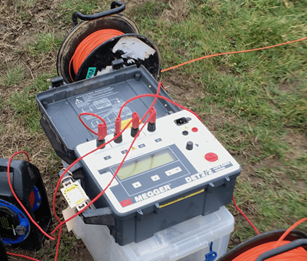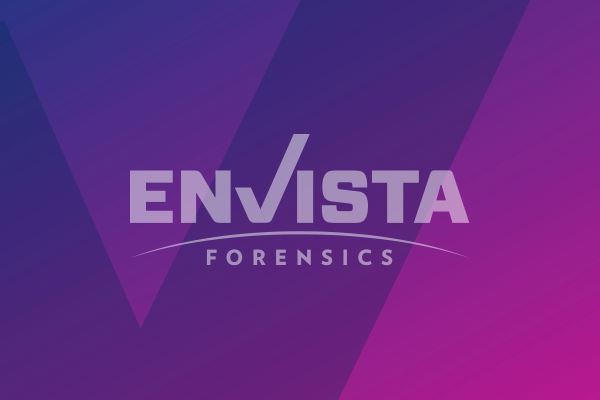The Exponential Growth of Solar Power: A Brief Grounding on Solar Farm “Earthing”

Solar panels now occupy an area around half the size of Wales (approx. 2,500,000 acres), and this year they will provide the world with about 6% of its electricity—which is almost three times as much electrical energy as America consumed back in 1954.1 Yet this historic growth is only the second most remarkable thing about the rise of solar power. The most remarkable is that it is nowhere near over.
Challenges and Considerations in Solar Farm Grounding Systems
Grounding, also known as earthing, ensures that the electricity travels through a low-resistance path when it flows from the source and returns through the neutral connection. For the most part, the ground (or earth) connection acts as a secondary path for electrical safety.
Solar farms can cover large areas (up to tens of square miles) which presents both safety and economic challenges for design of their grounding systems. The cost of large-scale solar farm grounding systems can reach millions of dollars so a small percentage of over-design can introduce a significant extra cost.
Meticulous design of the solar farm’s grounding system is required to ensure a functional system as well as personal safety during faults. Standard rules and guides apply for the practical grounding layout designs while the assessment of safety involves software modelling.
Note that the same practical approaches to grounding used for safe grounding system design of a substation cannot be used for solar farms due to their very large size, resulting in comparatively higher touch and step voltage hazards.
Why Ground Testing is Important
Poor grounding not only increases the risk of equipment failure, but it is also dangerous and can put both life and property at risk. Facilities need to have an adequately grounded system to ensure that current finds a safe path to earth in the event of insulation failure, lightning strikes, and voltage surges.
Personnel Safety Hazards During Earth Faults
Similar safety concerns which occur during faults for substations exist for solar farms. The following hazards should be investigated for solar farm faults2:
- Touch voltages on all electrical equipment or earthed objects within the fence boundaries.
- Touch voltages on any nearby metallic fences whether connected or otherwise due to possible transfer voltages.
- Touch voltages earthed structures or equipment in the vicinity of the solar farm which may be affected by transfer voltages.
- Step voltages throughout and just beyond the entire solar farm installation.
Soil Resistivity Measurements, Modelling and Standards
An accurate model or set of models of the soil electrical resistivity is required across the entire solar farm site in accordance with the methodologies described in IEEE Std 81.3 (This standard provides guidance for measuring earth resistivity, ground impedance, and earth surface potentials of a grounding system.)
Multiple sets of soil measurements should be taken for short probe spacings (from 0.5m up to about 30m) across the entire site with separations between testing locations typically in the order of 500m. These measurements at short spacings will help establish the soil model for the shallower soil layers.
It is also essential to get an understanding of the deep soil layer resistivity. For substations, according to IEEE Std 80, we use probe separations up to the overall diagonal width which would be impractical in the case of a solar farm.4 The IEEE Std 2278 recommends probe separations up to 300m be used for solar farms or at least taking measurements until the resistivity of the deep layer flattens out. It is always recommended to use a multi-layer soil resistivity model to closely match the actual soil structure for increased accuracy.
All measurement sets should be analysed separately, and an overall conservative model should be selected or derived. Table 1 of IEEE Std 2778 gives sample soil model development for a combined 3-layer soil model.
The total solar farm buried earthing system is comprised of various components. These include:
- Main PV Grid: This connects the earthing of groups of arrays and includes the transformer/inverter earthing.
- Auxiliary Earthing: This consists of the PV panel metal support posts, buried and electrically interconnected with support structures, cables, or both.
- Fence Earthing System: This consists of buried fence posts and grading conductors.
- Substation Grid (if applicable): This typically contains meshes of buried conductors.
Having all the components above included in a software model for the earthing systems will result in the most accuracy. However, there will be a serious trade-off with the calculation time. It may also be impossible to model all the components, especially for extremely large and complicated solar farms, in which case the modelling can be limited to a sample section of the total earthing system. Including the auxiliary earthing in the model results in a significant reduction in the amount of earthing needed for the main PV grid component. The fence and the substation earthing also help with achieving a safe design.
A ground fault level investigation should be performed to establish a worst-case fault level scenario including magnitude, short circuit (X/R) ratio and clearing time which will be used for assessing safety.
Conclusions and Recommendations
- Obtain accurate soil resistivity measurements along multiple traverses and derive an overall multi-layer soil resistivity model (garbage in = garbage out).
- Model the solar farm earthing arrangement as closely as possible to the actual installation and make sure you include the auxiliary earthing system including PV array support posts and structures.
- Review the relevant IEEE standards.
References
2 “IEEE Guide for Solar Power Plant Grounding for Personnel Protection,” in IEEE Std 2778-2020, vol., no., pp.1-24, 17 April 2020, doi: 10.1109/IEEESTD.2020.9068514.
3 “IEEE Guide for Safety in AC Substation Grounding,” in IEEE Std 80-2013 (Revision of IEEE Std 80-2000/ Incorporates IEEE Std 80-2013/Cor 1-2015) , vol., no., pp.1-226, 15 May 2015, doi: 10.1109/IEEESTD.2015.7109078.
4 “IEEE Guide for Measuring Earth Resistivity, Ground Impedance, and Earth Surface Potentials of a Grounding System,” in IEEE Std 81-2012 (Revision of IEEE Std 81-1983), vol., no., pp.1-86, 28 Dec. 2012, doi: 10.1109/IEEESTD.2012.6392181.
Vores eksperter kan hjælpe dig!





